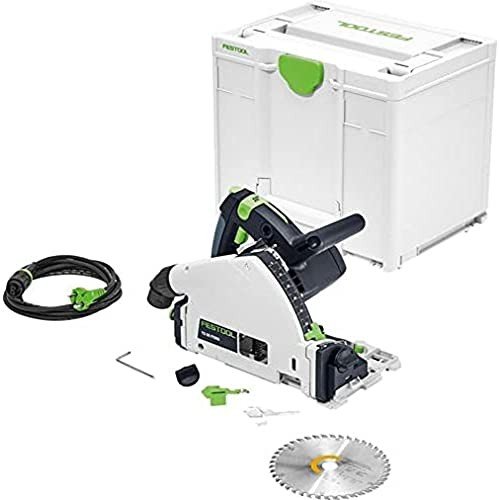5 People You Should Be Getting To Know In The Shop Power Tools Industry

The Workhorse of the Shop Power Tools
Hand-held power tools are powered by internal combustion, electricity or compressed air. They may be used to cut, drill, sanding or grinding materials.
One of the most important power tools every woodworker should own is a table saw, which makes quick work of nearly any cutting task. Also consider a miter-saw stand as well as a drill/driver kit.
Table Saw
A table saw is the workhorse of the shop power tools and perhaps the most versatile woodworking tool. It can be used to rip cross-cut, miter cut and even dado and rabbet stock. It can also cut angled surfaces for frames or chests. It can also make planters, chests, or frames.
The circular blade of the saw is massive and rotates at high speed. It has tables that are quite large (infeed and outfeed) that support the material as it passes through the blade. A blade guard protects the blade, stopping wood from being caught and then thrown back towards the operator. The saw is also protected by a splitter or riving knife which is a vertical projection that is located directly behind the blade that could be in the shape of a fin or pin.
Contractor-style table saws have a larger motor that hinges from the rear of the saw and drives the blade with one or two rubber v-belts. They are typically used by carpenters but can also be found in the home shop. They are more advanced than portable saws, such as a sliding miter table.
Smaller table saws come with smaller motors that are lighter in weight that is usually belt driven. These saws are more targeted toward hobbyists and for domestic use. Many feature the sliding miter table which allows users to make complex cuts such as those for mirror and picture frames or boxes, cases and drawers.
Utilizing a table saw correctly is crucial to avoid injury. Always stand to the left of the blade when making cuts that rip and ensure that your hands are away from the edge of the saw. It is important to use an extension stick or a guide block when cutting, particularly in workplace settings where HSE standards require that you remain at a minimum of one hand's distance from the blade.
Many woodworking projects require tapered legs, and the most efficient and quickest way to cut these is using a tablesaw and a simple tapering jig that you can build at home. A tapering jig is adjusted to any angle that is between 0 and 15 degrees, allowing you to cut any set of tapered legs for furniture such as tables or cabinets in your shop.
Bandsaw
A bandsaw is perfect for cutting various shapes in metal and wood, making it a vital tool for custom fabrication. It's also a great tool for woodworking projects like furniture and cabinetry. The saw can be used to cut curved cuts including circles, and can cut through a variety of materials including ice.
There are two types of bandsaws: vertical and horizontal. Vertical bandsaws are generally used for freehand cutting and excel at resawing as well as cutting in curved lines, while horizontal bandsaws are better in cutting straight and cut angles. The saw can be operated manually or with a powered feed system. Manual bandsaws require users to manually lower and raise the blade for each cut, whereas power-fed systems are more efficient.
Safety is the most important factor when using the bandsaw. Wear protective equipment, such as safety glasses or ear protection to shield yourself from noise and
Toolshop near Me sawdust. To avoid injuries and accidents keep your hands and feet clear of the blade. It is also essential to set up the saw correctly to ensure safe operation. Make sure that the blade and guides are aligned and that the blade is secured.
Depending on the type of material you're cutting, you might need to adjust the feed rate and saw speed to get the most efficient results. Regular maintenance and adjustments to the blade tension and tracking will ensure that your bandsaw makes accurate and precise cuts while extending its life.
The blade on a bandsaw is constructed from high-quality steel that's been treated to resist the stresses and fatigue of frequent use. The teeth are also welded onto the saw to give it a distinctive shape and preventing them from being broken or damaged by a sudden shock.
The size of the bandsaw's throat depth determines the size of material it can cut. The larger throat depths permit you to cut larger pieces of lumber, and are also useful for resawing and cutting, both of which are methods that require cutting across the grain. It's also worth noting that some bandsaws come with tilting tables, which could be beneficial for making certain types of angled cuts or recycling scrap wood.
Dust Collector
Woodworking tools produce chips and dust that need to be collected to protect your health, your shop's cleanliness, and the longevity of your equipment. The type of collector you require is determined by the number and size of power tools that you use in your woodshop as depending on the frequency at which they are used. The most effective woodworking dust collection systems provide superior filtration to eliminate tiny particles and allow you to breathe healthier, more comfortable and more comfortable as you work.
Nederman offers dust collection systems to meet your needs, whether you are a small-scale shop or a huge production woodworking facility. Our woodworking dust management, waste management, and combustible-dust solutions blend environmental protection and improvements in the efficiency of machines.
There are many kinds of woodshop dust collectors on the market including:
A basic dust extractor is an effective tool that can replace a shop vac. The units connect to your power tools via an hose that connects to the dust port on your machine. The hose is activated when you turn on the tool and pulls dust and debris out of your workspace.
The majority of dust extractors, based on the model you choose, are equipped with an HEPA filter to remove fine dust particles which can cause respiratory problems in the course of time. They also usually feature a higher CFM (cubic feet per minute) airflow, which allows for a greater volume of air. They might also have an airspeed gauge as well as a system that automatically cleans the filter.
If you own a larger shop or would like the added flexibility to use your woodworking tools at any time, you should consider a portable woodshop dust collector with a rechargeable battery and an integrated plug-in connector that connects directly to the power tool. They are lightweight and can be used with several tools at the same time. They usually come with a caster base. They also include a collection bag or a reusable filter for quick emptying.
If you're a skilled woodworker or contractor, you may require a more efficient dust collection system. These units are more expensive than an extractor, but they provide a greater range of filtration options. They can be installed on a wall or in a separate room in your shop. These units can be used to clean up plaster, drywall and other demolition projects, as well as woodworking projects.
Planer
The planer is the best power tool no woodshop should be without. It's not the most glamorous or flashy instrument, but it can make a significant impact on your ability to transform lumber that is rough into beautiful and useful projects. It can be used to cut boards down to a specific thickness, and it can be used on both softwoods and hardwoods. It is also useful for dealing with heavy, clunky or twisted wood that is not possible to handle with hand tools.
A portable planer that is of good quality is worth the admission price to any woodworking workshop. You might be able locate a planer for sale at a reasonable price, but pay attention to the condition and the infeed and outfeed table. These elements will determine the quality of your planer's perform and if it will last a long time before needing replacement parts. If the cutter head isn't of the highest quality, it will wear out quickly and you might need to replace it in a very short amount of time.
The jointer and the planer are not the exact identical machines. The jointer creates a board straight and flat, whereas the plane will cut it to a specified thickness. Some woodworkers may even use the two machines together to complete a project however, both are essential for any workshop that handles rough lumber regularly.
If you're looking to do woodworking on a professional level and are seeking a reliable piece of equipment, then a commercial-grade planer may be worth the investment. These machines are designed to be used in situations where the speed of production is more important than the surface finish. These machines will save you a amount of time, but you must be careful not to overload them. They could be able to burn out. They also have to be maintained properly to ensure that they function in a safe manner. A good shop maintenance routine will go a long ways towards prolonging the life of your planer.
 The Workhorse of the Shop Power Tools
The Workhorse of the Shop Power Tools
